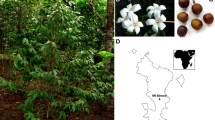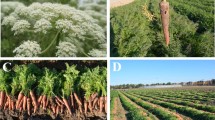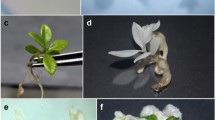Abstract
The demand for decaffeinated coffee is increasing because the stimulatory effects of caffeine can adversely affect sensitive individuals by triggering palpitations, increased blood pressure and insomnia1. Three N-methyltransferase enzymes are involved in caffeine biosynthesis in coffee plants — CaXMT1, CaMXMT1 (theobromine synthase) and CaDXMT1 (caffeine synthase), which successively add methyl groups to xanthosine in converting it into caffeine2,3,4. Here we describe the construction of transgenic coffee plants in which expression of the gene encoding theobromine synthase (CaMXMT1) is repressed by RNA interference (RNAi). The caffeine content of these plants is reduced by up to 70%, indicating that it should be feasible to produce coffee beans that are intrinsically deficient in caffeine.
This is a preview of subscription content, access via your institution
Access options
Subscribe to this journal
Receive 51 print issues and online access
$199.00 per year
only $3.90 per issue
Buy this article
- Purchase on Springer Link
- Instant access to full article PDF
Prices may be subject to local taxes which are calculated during checkout

Similar content being viewed by others
References
Ashihara, H., Monteiro, A. M., Gillies, F. M. & Crozier, A. Plant Physiol. 111, 747–753 (1996).
Ogawa, M., Herai, Y., Koizumi, K., Kusano, T. & Sano, H. J. Biol. Chem. 276, 8213–8218 (2001).
Uefuji, H., Ogita, S., Yamaguchi, Y., Koizumi, N. & Sano, H. Plant Physiol. 132, 372–380 (2003).
Hatanaka, T., Choi, Y. E., Kusano, T. & Sano, H. Plant Cell Rep. 19, 106–110 (1999).
Ashihara, H. & Crozier, A. Trends Plant Sci. 6, 407–413 (2001).
Ohta, S., Mita, S., Hattori, T. & Nakamura, K. Plant Cell Physiol. 31, 805–813 (1990).
Author information
Authors and Affiliations
Corresponding author
Ethics declarations
Competing interests
The authors declare no competing financial interests.
Rights and permissions
About this article
Cite this article
Ogita, S., Uefuji, H., Yamaguchi, Y. et al. Producing decaffeinated coffee plants. Nature 423, 823 (2003). https://doi.org/10.1038/423823a
Published:
Issue Date:
DOI: https://doi.org/10.1038/423823a
This article is cited by
-
The biological feasibility and social context of gene-edited, caffeine-free coffee
Food Science and Biotechnology (2022)
-
Metabolic engineering in woody plants: challenges, advances, and opportunities
aBIOTECH (2021)
-
The absence of the caffeine synthase gene is involved in the naturally decaffeinated status of Coffea humblotiana, a wild species from Comoro archipelago
Scientific Reports (2021)
Comments
By submitting a comment you agree to abide by our Terms and Community Guidelines. If you find something abusive or that does not comply with our terms or guidelines please flag it as inappropriate.



